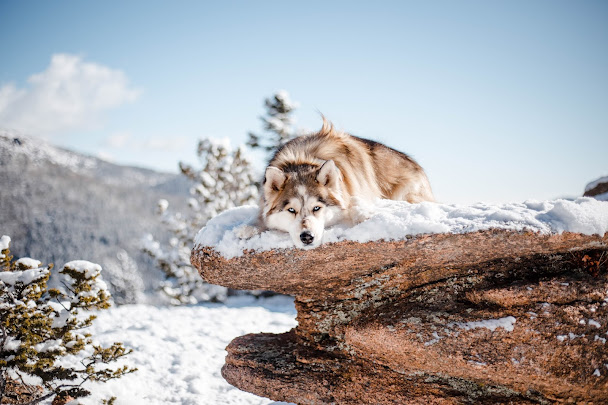How Did Dogs Become Man's Best Friend?
HOW DID DOGS BECOME "MAN'S BEST FRIEND"?
But just how did these once wild animals become “Man’s Best Friend?”
It is possible that hunter-gatherers domesticated dogs by taking wolf cubs and raising them to be companions and protectors. But there is also a theory known as “Survival of the Friendliest” which concludes that wolves actually domesticated themselves.
Most wolves would have been fearful and/or aggressive towards humans, as these are typical wolf traits. But some wolves may have been less fearful and more likely to approach humans, thus giving them access to food collected by human hunter-gatherers. This increased their chance of survival by ensuring they had access to food without the need to put themselves in as much danger.
Having these wolves around their campgrounds provided humans with ample warning if any potential danger approached, and allowed them to be more effective hunters with the help of their new companions, allowing early humans to advance as a civilization.
Thus, a symbiotic relationship developed where humans had the advantage of a warning system and more efficient hunting techniques, and the wolves had the advantage of being well-fed.
In addition, both the human and canine species is highly emotionally intelligent, and produce a hormone in the brain, called oxytocin, which helps us to form emotional bonds when eye contact is made. So when dogs and humans gaze into each other’s eyes, deep bonds are formed, and both species learn to understand each other. This led to humans developing close bonds with dogs even when they became less dependent on dogs to ensure their own survival.
From their wild origins, dogs have now evolved into more than 200 different breeds. For thousands of years, humans selectively bred dogs to create breeds that displayed certain temperaments and characteristics that served specific functions, in order to develop dogs that could assist humans with farming, protection, companionship, hunting and retrieving objects.
Today, many dogs still help farmers to herd and protect livestock, assist with police and military work, drug detection and search and rescue, and help people with vision impairments and disabilities with tasks that make life easier. But it has become increasingly common for humans to bring dogs into their homes for the sole purpose of companionship and love.
Despite the changes in behaviour that have occurred with domestication, modern dogs still display many innate behaviours that are a throwback to their ancient ancestors and the behaviours they performed whilst living in the wild, many of which helped to ensure their survival.
This means that many of the things our dogs do, which we may find frustrating or annoying, have been passed down through the generations from their wild ancestors. Barking, howling, digging, marking, humping and resource guarding are all behaviours that were a necessary part of life for our canine’s ancestors.
Barking, howling and other vocalisations alerted the pack to threats and danger, and your dog is still hard-wired to use barking to intimidate intruders and warn you of potential danger. Digging is another innate behaviour that your dog carries over from their wild ancestors, who would dig to find prey, bury food remains for later, or make comfortable beds for themselves by removing rocks and twigs and revealing cooler dirt to protect them from the heat.
We owe it to our dogs to really learn and understand their history, their instincts and innate needs, and their body language, so that we can communicate effectively with them, and make sure they are as happy as possible by providing them with games and activities that fulfill their innate behavioural needs.
In other words, Let Dogs be Dogs.
©Rebeca Mas 2021


Comments
Post a Comment